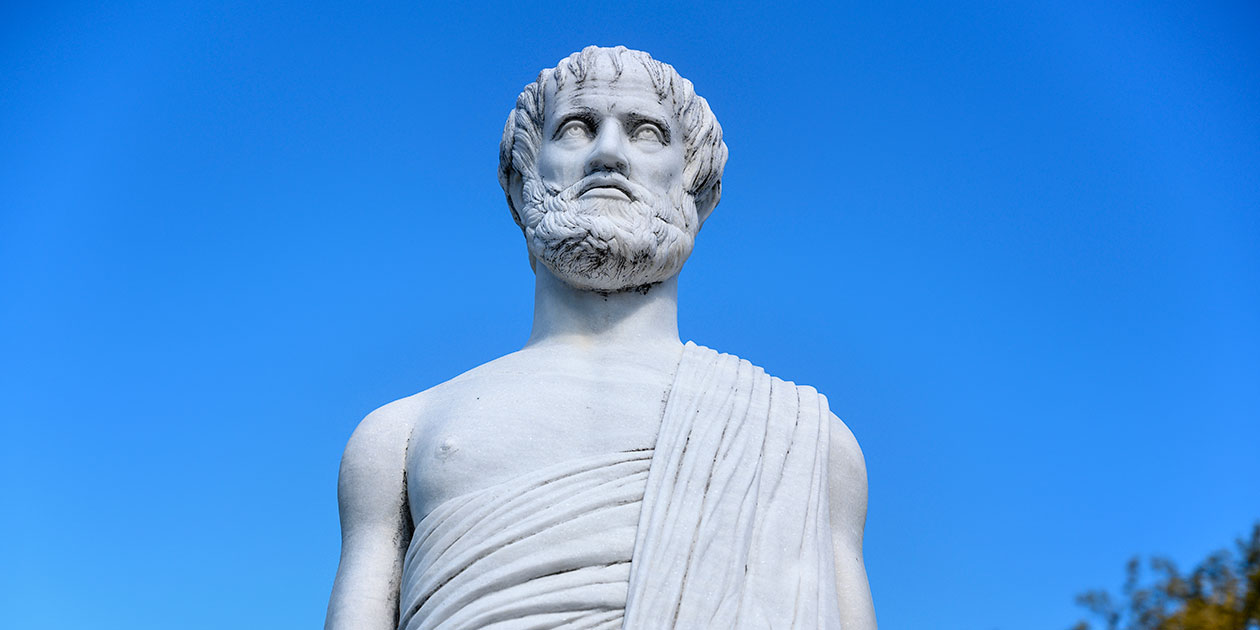Marketing and advertising are all about storytelling—capturing your audience’s attention and persuading them to connect with your brand.
But how do you create marketing that truly resonates? How do you take customers on a journey and inspire them to invest in what you’re offering?
Over 2,300 years ago, Aristotle, the famous Greek philosopher, laid out what’s still considered one of the most important frameworks of persuasion. He identified four key principles that are essential for influencing others:
- Ethos: Building credibility and trust.
- Pathos: Tapping into emotions and telling compelling stories.
- Logos: Using logic and reason to make your case.
- Kairos: Delivering the right message at the right moment.
Despite their age, these concepts continue to shape how we think about persuasion. In this article, we’ll explore how these timeless principles apply to modern marketing—and share tips on how you can use them effectively in your own strategy.
Ethos: Persuading with Credibility
Ethos is all about credibility. Aristotle knew that no matter how logical or well-thought-out your argument is, it won’t matter if your audience doesn’t trust you.
In marketing, persuasion often starts before you even deliver your message. That’s why major brands invest heavily in public relations to keep their reputation strong.
Building trust with your audience can come from several angles—whether it’s your reputation, signals of expertise, or endorsements from others. Here are some ways to bring ethos to life in your marketing:
- Share case studies and testimonials that prove your expertise.
- Highlight the knowledge and experience within your organization.
- Showcase any press coverage or customer reviews you’ve received.
- Display third-party accreditations or awards you’ve earned.
- Feature endorsements from trusted sources, like experts or popular influencers.
By establishing credibility, you make it easier for your audience to trust and engage with your brand.
Pathos: Persuading with Emotion
Pathos, the second pillar of Aristotle’s persuasion theory, focuses on emotional appeal.
At our core, humans are emotional beings. Aristotle believed that if you want to persuade someone, you can’t rely solely on logic—you need to make them feel something. Your audience should feel moved by your message.
In marketing, pathos comes to life through emotional relevance. The key is making sure your message connects with your audience’s beliefs, experiences, and desires.
Take Patagonia, for example. In her book Data-Driven Personalization, Zontee Hou highlights how Patagonia uses pathos. As part of their 50th anniversary campaign, they posted this message: “For our 50th year, we’re looking forward, not back, to life on Earth. Together, we can prioritize purpose over profit and protect this wondrous planet, our only home.” This creates a strong emotional connection with customers who care about environmental causes and feel part of a greater mission.
Another brand that excels at using pathos is Red Bull. They’ve heavily invested in extreme sports and thrilling stunts to stir up emotions of excitement and fun. By associating these feelings with their brand, Red Bull makes their audience believe they can tap into that excitement by simply buying a can of their drink.
To successfully use pathos in your marketing, you need to truly understand your audience. What are their priorities? What challenges do they face? What excites or amuses them? What frustrates them? Use this emotional insight to improve your messaging.
You can gather this data in several ways—track which articles they’re reading, monitor the products they’re viewing, or conduct surveys on your website. If you have direct conversations, you can manually store their preferences in your CRM for future reference.
Logos: Persuading with Logic
Aristotle’s third pillar of persuasion is logos, and it’s all about using logic to convince your audience. Instead of appealing to emotions, logos rely on cold, hard facts—statistics, data, and common sense.
In marketing, leveraging logos means providing concrete evidence that your product or service delivers real results.
If you want to make a strong logos appeal, cite relevant facts and figures. This could be anything from industry statistics to customer testimonials backed by data. While it’s good to use sophisticated language to establish credibility, make sure your message remains clear and understandable. Remember, the goal is to inform, not to confuse.
Brands often use product features, case studies, and demonstrations to persuade through logic. For example, a software company might showcase how their tool increases productivity by 30%, backed by case studies from satisfied clients. These tangible examples help potential customers see the real-world benefits of your offering.
Sharing data and research about your audience’s peers can be especially powerful. People tend to trust what has worked for others in similar situations. For instance, stating “Our product has prevented 174 security breaches over the last 12 months for organizations like yours” not only provides a specific benefit but also builds trust through social proof.
Kairos: Persuading at the Right Moment
Ethos is about the speaker’s credibility. Pathos appeals to emotion. Logos relies on logical arguments. But Aristotle knew that kairos ties them all together.
Kairos is persuasion through timeliness. It means saying the right thing, in the right way, at the right time.
Depending on your audience and the situation, you need to balance logos, ethos, and pathos. Using only facts and data for an emotional topic might not hit the mark. On the flip side, too much emotion can make the audience feel manipulated. Think of kairos as a tool to gauge how much of each element to use.
For example, an ad featuring Avril Lavigne would resonate more with teens in 2002 than in 2012. Kairos also explains why you’d write a different complaint email to a customer than to your mom or a close friend. You might want similar results from both, but depending on who reads it, you’ll adjust the timing, tone, and level of formality.
Businesses harness kairos in many ways. You see it in limited-time offers and holiday discounts. They give special deals and birthday perks to loyal customers. Even B2B companies might offer better pricing at the end of a quarter or focus on clients’ year-end goals to highlight the importance of acting now. All these are examples of using kairos to persuade.
Hitting the Sweet Spot: Combining Ethos, Pathos, Logos, and Kairos
Convincing your audience to act requires a delicate balance of ethos, pathos, logos, and kairos. Think of these appeals as ingredients in a recipe, where each scenario demands a different mix. Sometimes, the focus might lean heavily toward logos and ethos—like when appealing to institutional investors choosing an asset management firm. In such cases, demonstrating the firm’s benefits, processes, capabilities, and trustworthiness becomes crucial.
Other times, you may need to emphasize pathos and logos. Consider sneakers designed for healthcare professionals. Highlighting the unique challenges they face—long days and exhaustion—and explaining how the footwear enhances full-body comfort and health can make your message more compelling. The mix of appeals shifts based on who you’re talking to and what resonates with them.
Understanding how your audience thinks—how they make their decisions, whether they make decisions quickly or take their time—is key to determining the kind of information they’ll respond to and how much they’ll need before making a choice. If you’re unsure, you need to do audience research.
How does this mix of appeals play out in the real world? Take a look at any popular eCommerce website like Amazon, Temu, Shein, etc. They’ll use ethos (high star ratings), pathos (they’ll track your internet browsing as much as they can to find what you’ll need), logos (strong value proposition with clear product features), and kairos (a limited-time offer) to prompt action.
Pulling together these different appeals in a highly personalized way isn’t exclusive to companies like Temu which spends more than a billion dollars per year on advertising. Techniques like account-based marketing (ABM) in B2B sectors use similar strategies to target highly relevant accounts with compelling content on a one-to-one basis.
Another thing to remember – people often craft arguments that seem persuasive to themselves but not to their listeners. Your goal is to convince the audience that the choice you offer is most advantageous to them—not to you. This circles back to values; the most effective outcomes align with what the audience truly values.
By hitting the sweet spot—a perfect blend of ethos, pathos, logos, and kairos—you create marketing messages that resonate deeply, prompting your audience to take the desired action.


